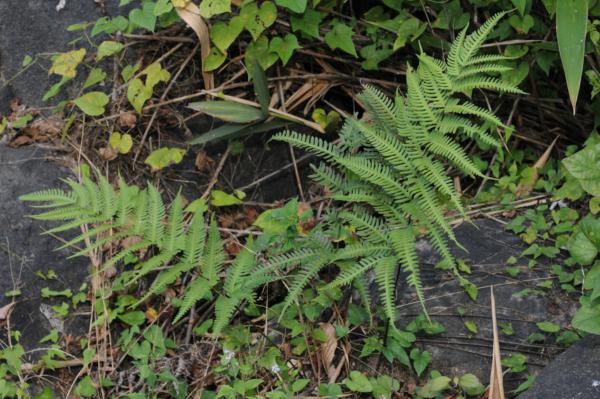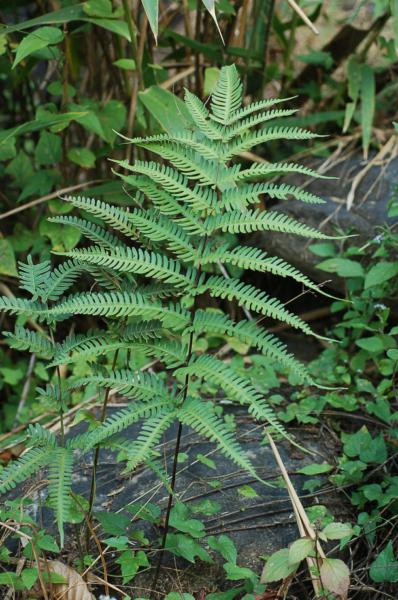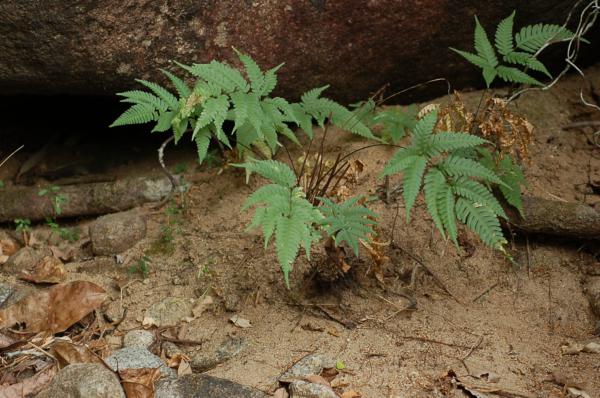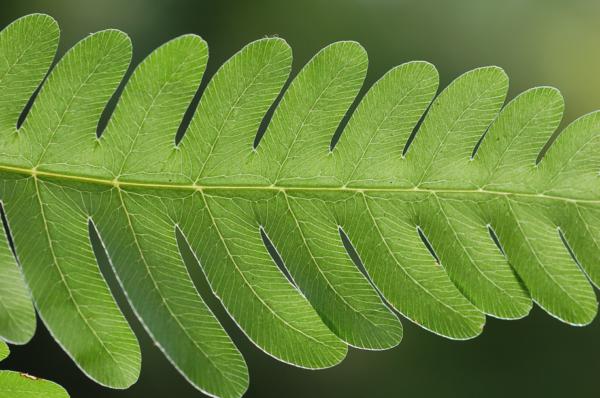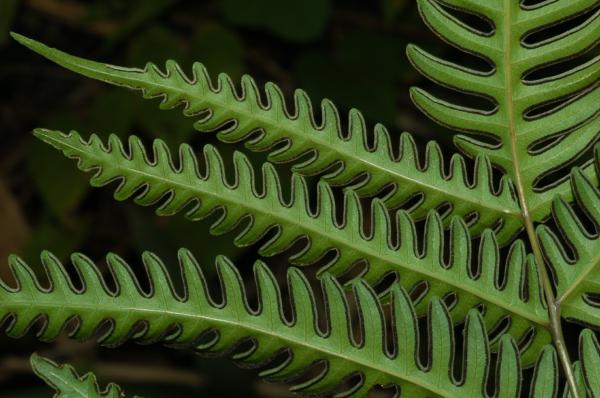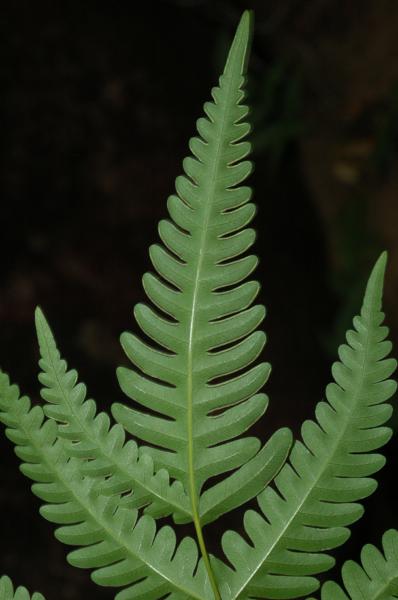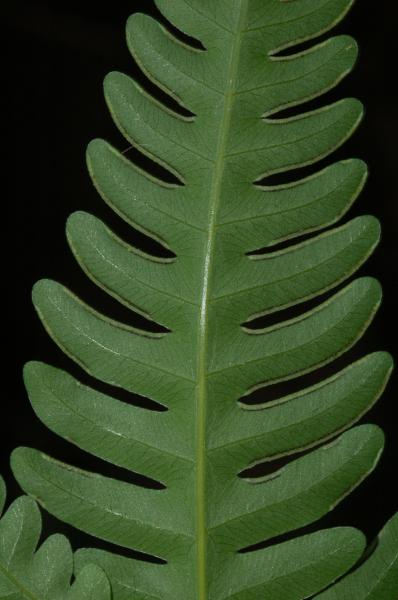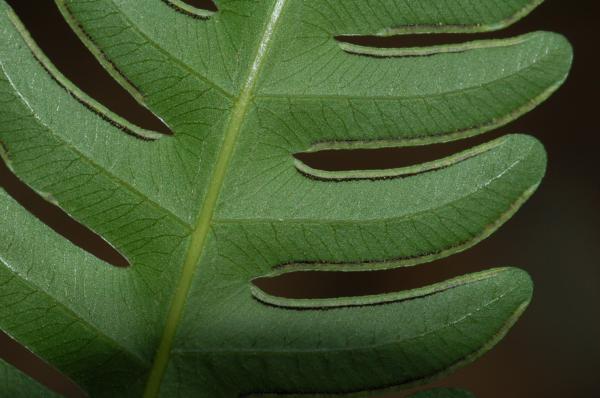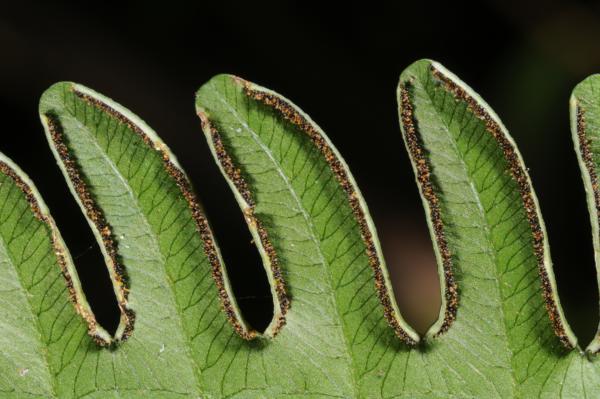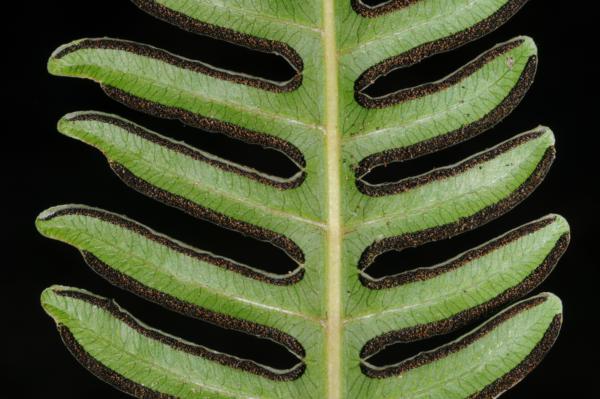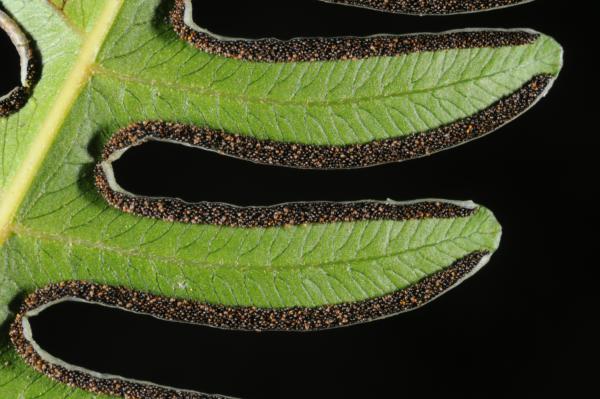
Pteris biaurita L.
Family
Pteridaceae, subfamily Pteridoideae
Nomenclature
Pteris biaurita L., Sp. Pl.: 1076. 1753; Christ, Bot. Tidsskr. 24: 106. 1901, as P. quadriaurita var.; C.Chr., Bot. Tidsskr. 32: 348. 1916; C.Chr., Contr. U.S. Natl. Herb. 26: 333. 1931; Tardieu & C.Chr., Fl. Indo-Chine 7(2): 159. 1940; Holttum, Rev. Fl. Malaya ed. 1, 2: 407, f. 237. 1955 [‘1954’]; Holttum, Dansk Bot. Ark. 20: 27. 1961; Holttum, Dansk Bot. Ark 23: 235. 1965; Tagawa & K.Iwats., SouthE Asian Stus. 3(3): 83. 1965; Tagawa & K.Iwats., SouthE. Asian Stud. 5: 80. 1967; Tagawa & K.Iwats., Fl. Thailand 3: 237. 1985; Boonkerd & Pollawatn, Pterid. Thailand: 106, 127. 2000. – Campteria biaurita (L.) Hook., Gen. Fil.: t. 65A. 1841; Bedd., Handb. Ferns Brit. India: 116. 1883.
Pteris quadriaurita var. grevilleana Christ, Bot. Tidsskr. 24: 106. 1901, p.p. excl. type.
Pteris repandula Link, Fil. Spec.: 56. 1841; Hosseus, Beih. Bot. Centr. 28(2): 366. 1911.
Description
Rhizome short, erect, bearing a few fronds in a tuft, densely scaly at apex; scales to 5 by 0.5 mm, nearly black margined by pale ferrugineous edges with toothed margin. Stipes up to 50 cm long, dark brown and scaly at apex; laminae deeply bipinnatifid, up to 60 cm or more in length, 30 cm wide. Pinnae opposite or nearly so, up to 12 pairs, straight, ascending, linear-lanceolate, broadly cuneate at base, gradually narrowing towards acuminate apex, up to 20 by 5 cm, deeply lobed to 5/6 way towards costa, basal pinnae bearing a long basiscopic pinnule just like lateral ones; ultimate segments oblong, falcate, rounded or moderately acute at apex, with rounded sinus, up to 7 mm broad, firm, green, glabrous; basal veinlets uniting with those of opposite groups forming arches close to costa, bearing a few branches on posterior side, the other veinlets forked, all free. Sori marginal, usually continuous along segments except at bottom of sinus and at apex; indusia thin, pale.
Distribution in Thailand
NORTHERN: Chiang Mai, Chiang Rai, Lamphun, Tak; NORTH-EASTERN: Phetchabun, Loei; EASTERN: Chaiyaphum; SOUTH-WESTERN: Kanchanaburi; CENTRAL: Nakhon Nayok; SOUTH-EASTERN: Chon Buri, Chanthaburi, Trat; PENINSULAR: Surat Thani, Phangnga, Nakhon Si Thammarat, Trang, Yala.
Distribution in Laos
Champasak, Khammouane, Kampot, Hua Phan, Xieng Khouang.
Distribution in Cambodia
Kampot, Koh Kong.
Wider Distribution
Pantropical.
Ecology
On mountain slopes in light shade or in lower montane forests at altitudes below 1400 m, usually a lowland species .
Proposed IUCN Conservation Assessment
Least Concern (LC). This species is widespread and not under any known threat.
Notes
The size and form of frond are very variable. The most important diagnostic feature is in the venation, anastomosing to form costal areoles .
Voucher specimens - Thailand
Middleton et al. 4662, Chanthaburi, Namtok Phlio National Park (E); Middleton et al. 4694, Chanthaburi, Khlong Khrue Wai Wildlife Sanctuary (E); Middleton et al. 4716, Chanthaburi, Khao Soi Dao Wildlife Sanctuary (E).
Voucher specimens - Laos
Thorel s.n., Champasak, Kong (P); Poilane 2104, Hua Phan, Sam Neua (P); Petelot 4097, Khammouane, Kouan Phe Vang (P); Bouillod 39, Kampot (P); Poilane 2210, Xieng Khouang (P).
Voucher specimens - Cambodia
Bouillod s.n., Unspecified (P); Long et al. CL499, Koh Kong (P).
Habit
Habit
Habit
Venation
Pinnae
Frond apex
Pinnules
Pinnules with marginal sori
Pinnules with marginal sori
Pinnules with marginal sori
Pinnules with marginal sori
Site hosted by the Royal Botanic Garden Edinburgh. Content managed by Stuart Lindsay, Gardens by the Bay, Singapore and David Middleton, Singapore Botanic Gardens. Last updated 24 January 2012
